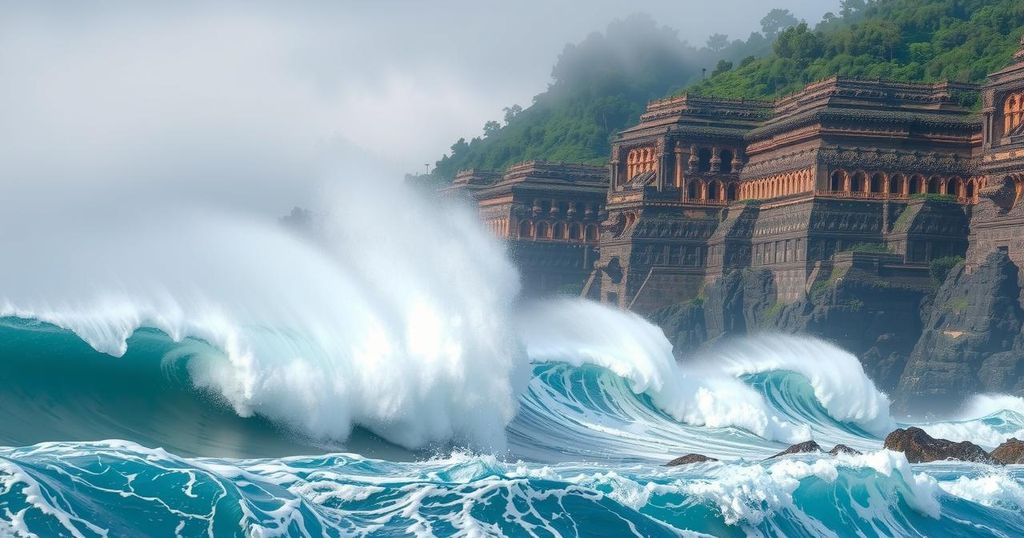Peru and Ecuador Face Destructive High Waves: Continued Warnings and Impacts

Massive waves along the coast of Peru and Ecuador have led to widespread destruction, the closure of ports, and tragically, the loss of lives. The phenomenon, triggered by climatic factors, has peaked but may persist until early January, raising concerns about future occurrences due to climate change.
Authorities in Peru and Ecuador are issuing persistent warnings to remain clear of coastal areas due to exceptionally high waves causing destruction along their shores. This meteorological event commenced on Christmas Day, reaching its peak on December 27 and 28, with expectations that it may continue until at least January 4. Reports indicate waves have surged to heights of 13 feet (4 meters), severely affecting fishing communities and popular tourist destinations, including parts of Callao, prompting the closure of approximately 100 out of 121 seaports in Peru.
The ramifications of these waves have been particularly dire along the northern coast, where images depict fishing vessels being violently tossed by the turbulent waters. The Peruvian Navy has successfully rescued around 30 fishermen stranded offshore, yet it is estimated that an additional 100 to 180 remain trapped at sea. Crushing losses have also been reported, with one coastal community citing the loss of at least 100 fishing boats due to the relentless waves.
Navy Captain Enrique Varea has warned that conditions may worsen, as surges in wave height are already three times above normal levels. Meteorologists predict a possible moderation of conditions by the end of December, though continued impacts are anticipated into the new year. Civil Defense officials attribute this phenomenon to ecological changes, underscoring climate change as a contributing factor. They specifically mentioned the influence of powerful winds from as far away as the United States and record-high tides responsible for the ongoing impacts, clarifying that their assessments indicate a persistent weather pattern rather than a tsunami or freak wave occurrence.
Adding to the challenges, Peru recently declared an environmental emergency following an oil spill that affected approximately 10,000 square meters of surface water, contaminating several beaches and harming local wildlife. The holiday season, typically a bustling time for coastal resorts, has seen significant disruptions due to these high waves that have destroyed numerous businesses along the coast. Tragically, Ecuador has reported two fatalities attributed to the high waves, while Chile has discovered a body washed ashore, although Peru has yet to confirm any related casualties.
The coastal regions of Peru and Ecuador are currently facing an unusual meteorological phenomenon characterized by massive wave surges that have resulted in significant destruction and disruptions. The event, which initiated on December 25, 2023, has raised alarms among local authorities and emergency services, leading to the closure of numerous ports and the issuance of safety warnings to the public. Such environmental phenomena are becoming increasingly prevalent in the context of climate change, which has altered weather patterns globally.
In summary, the coastal areas of Peru and Ecuador are grappling with severe challenges posed by abnormally high waves, which have resulted in loss of life and substantial economic damage. The situation remains critical as authorities monitor ongoing weather patterns and emphasize the need for public safety amidst expectations of continued impacts through early January. The incidents highlight the increasing urgency of addressing climate change and its effects on coastal ecosystems and communities.
Original Source: maritime-executive.com








